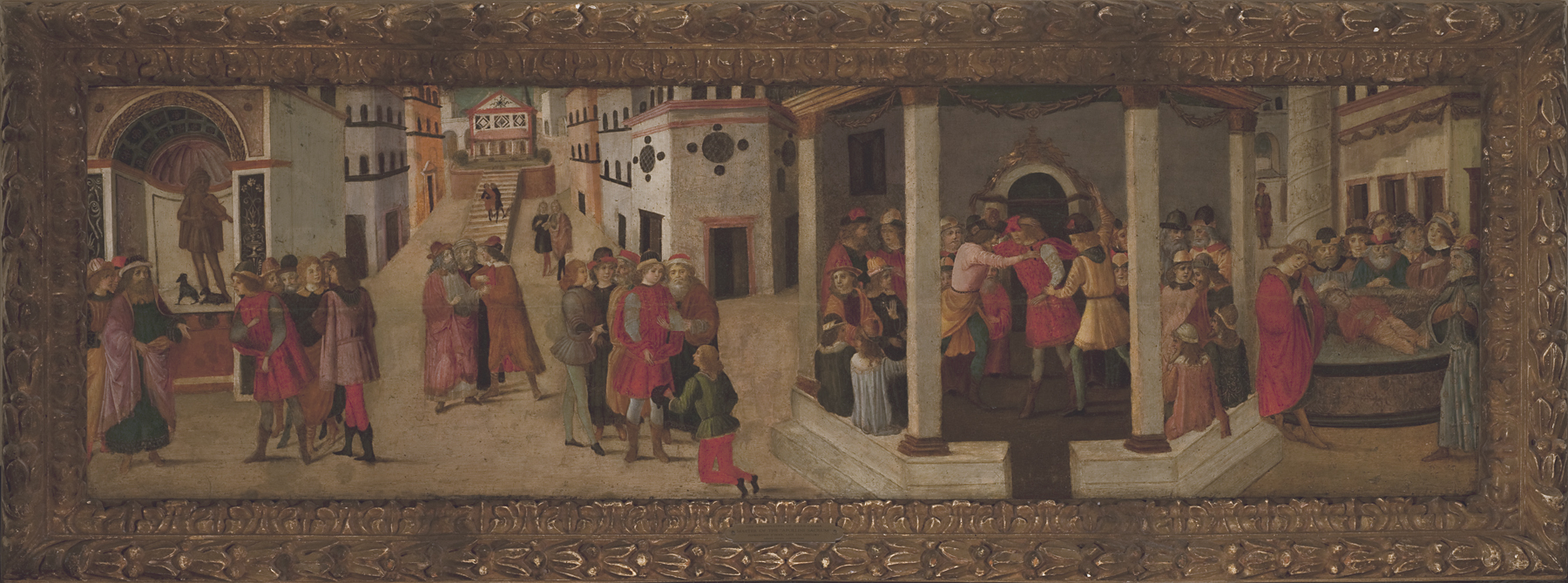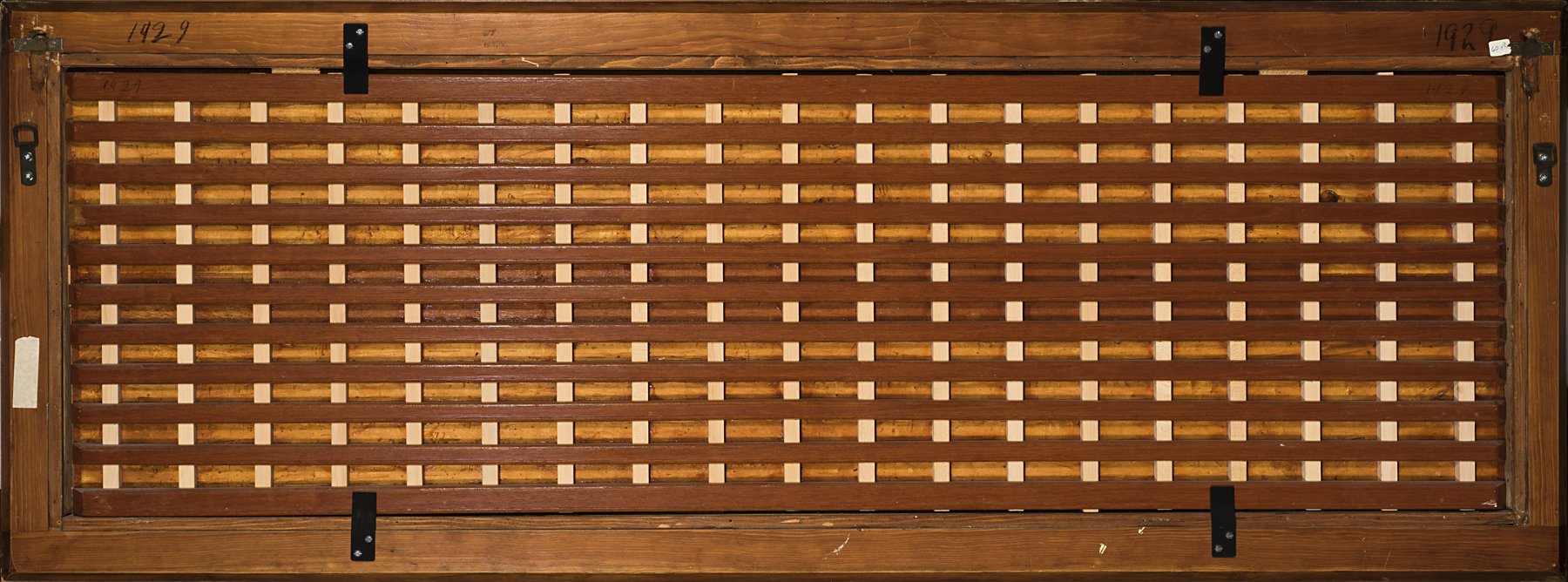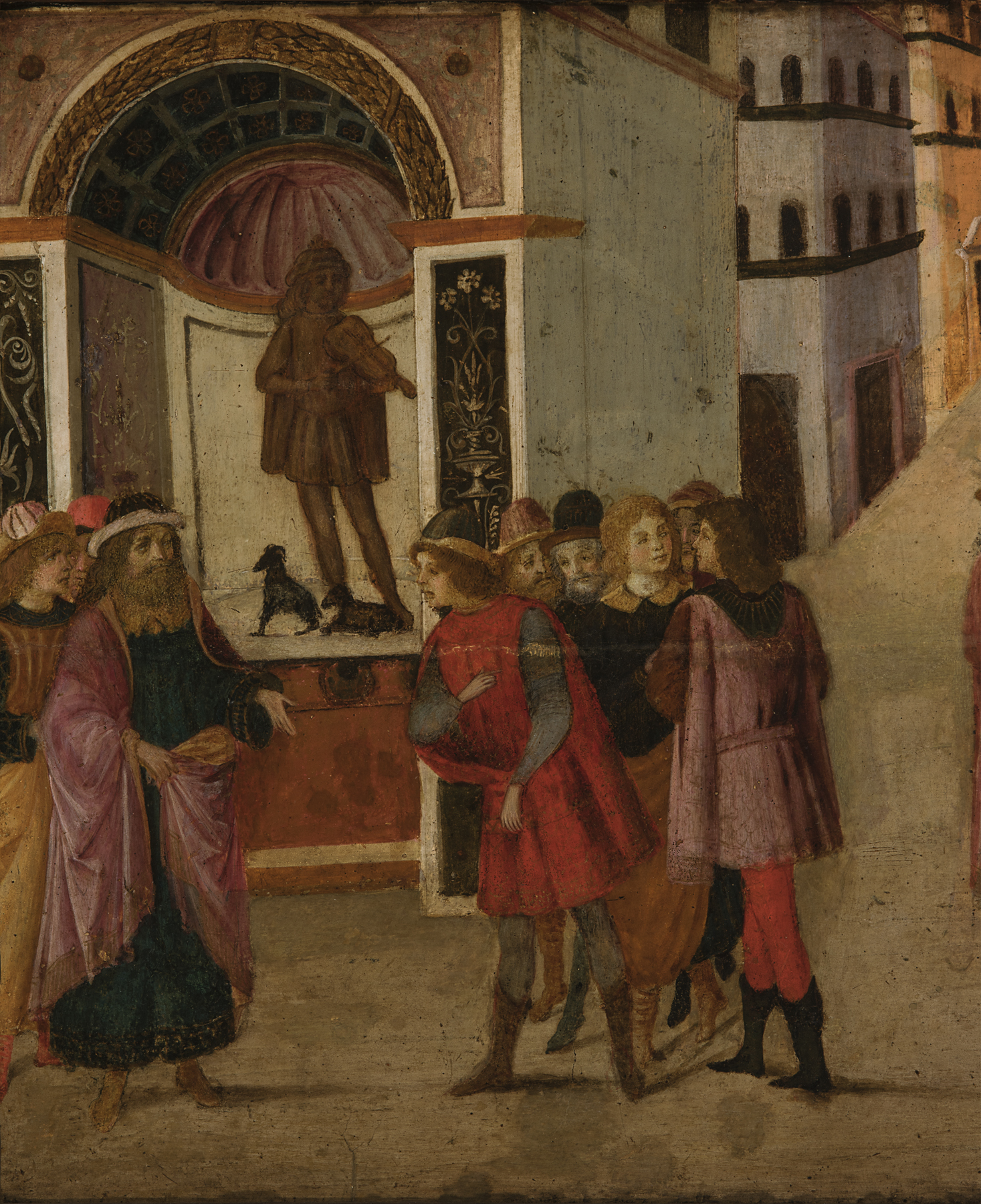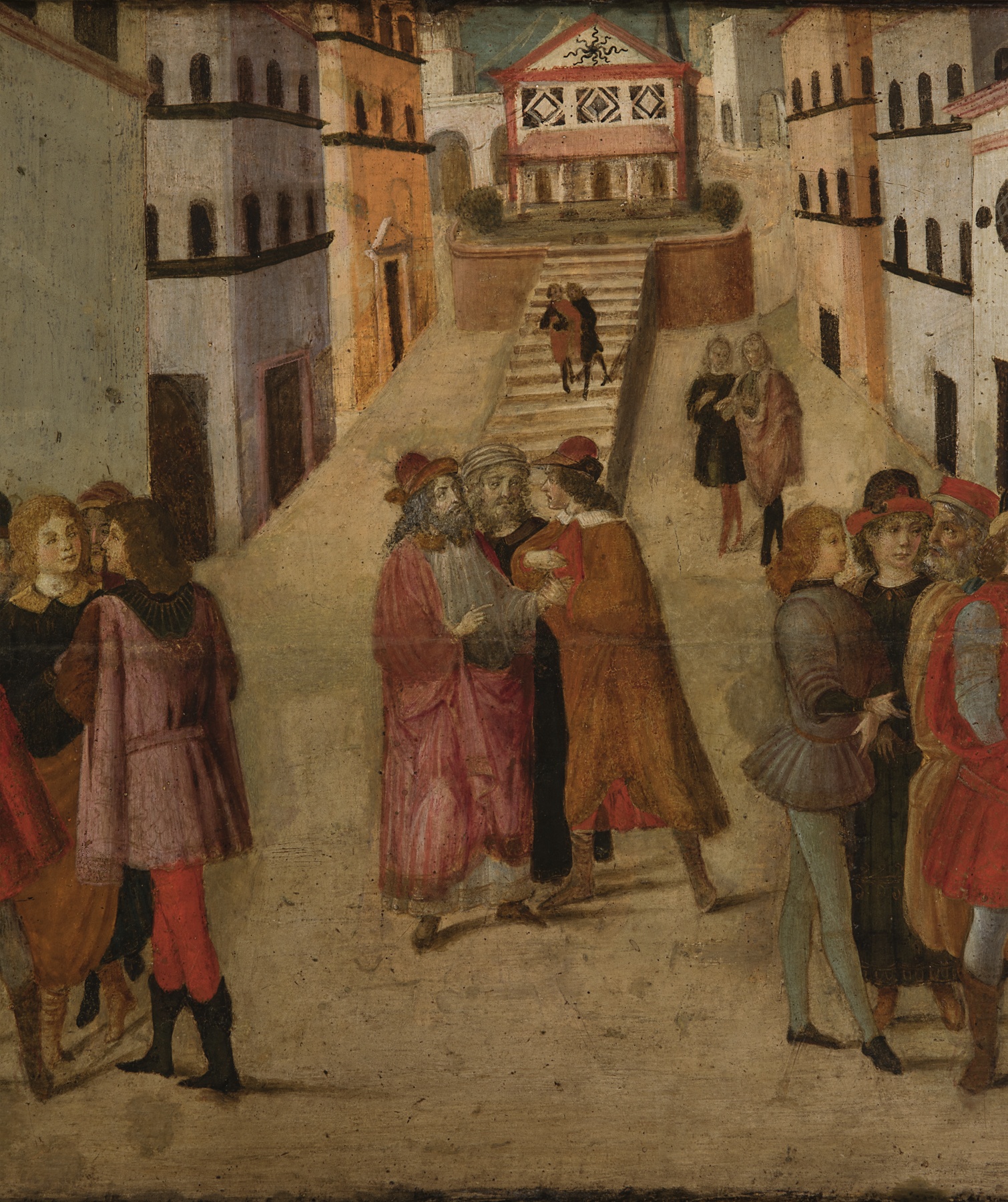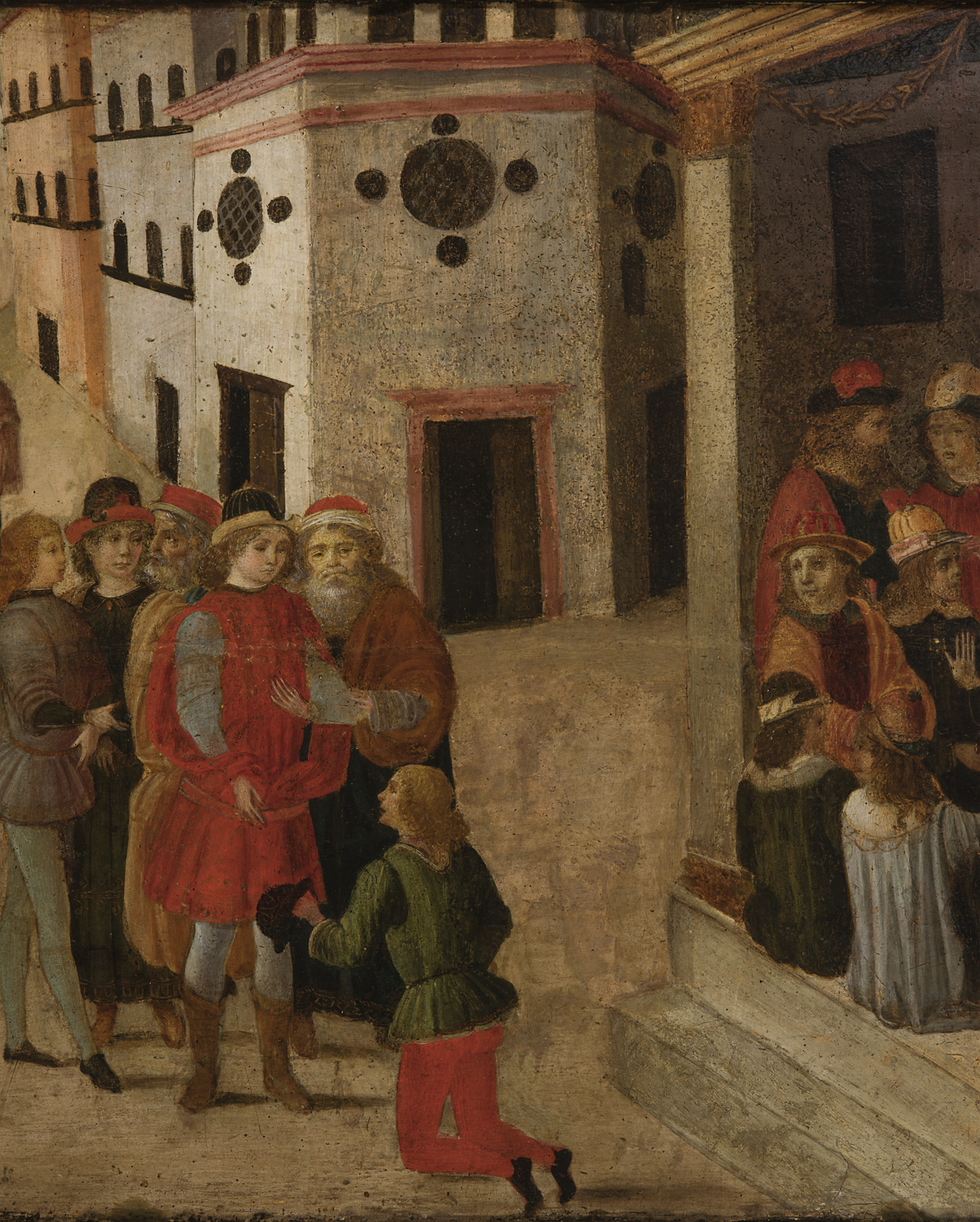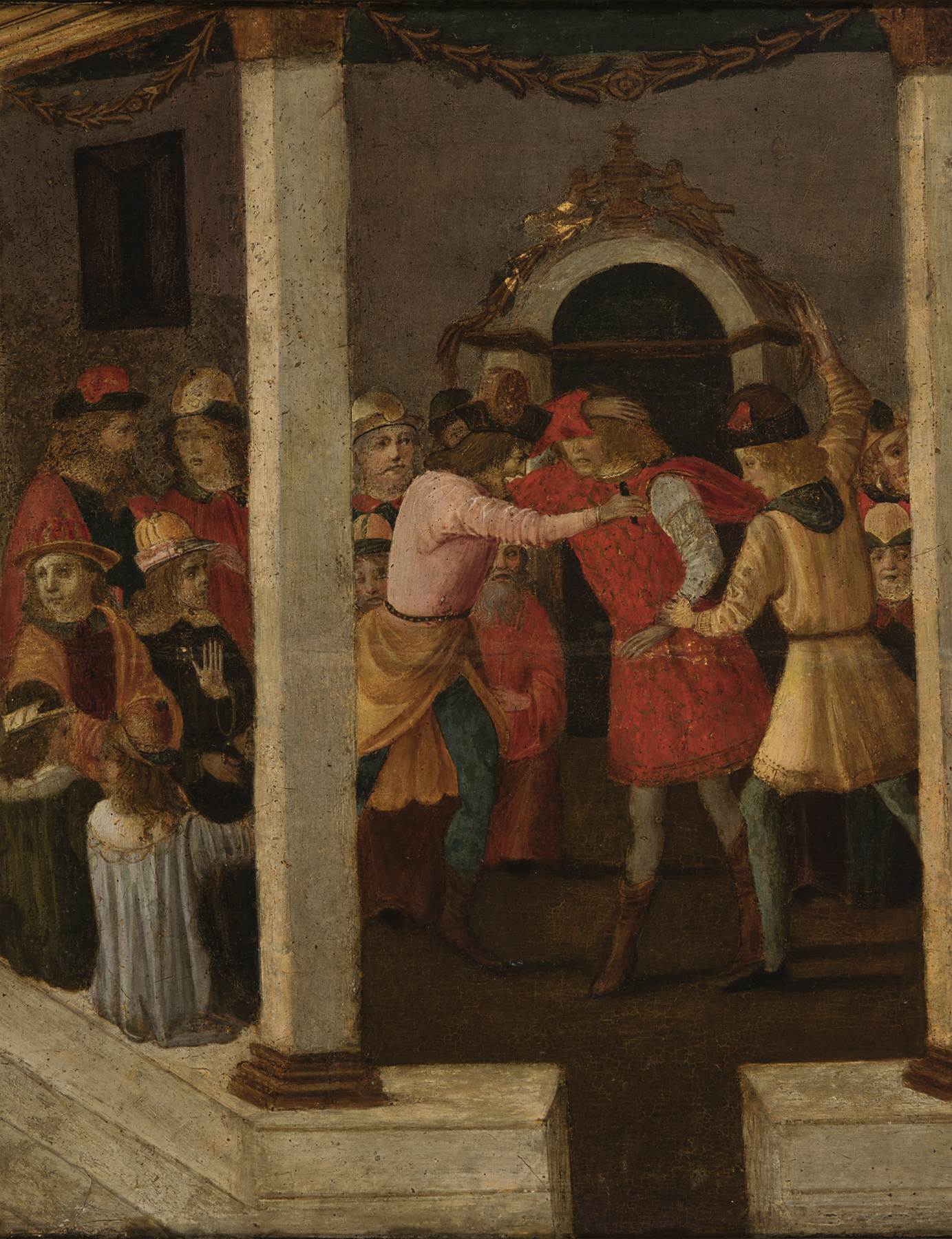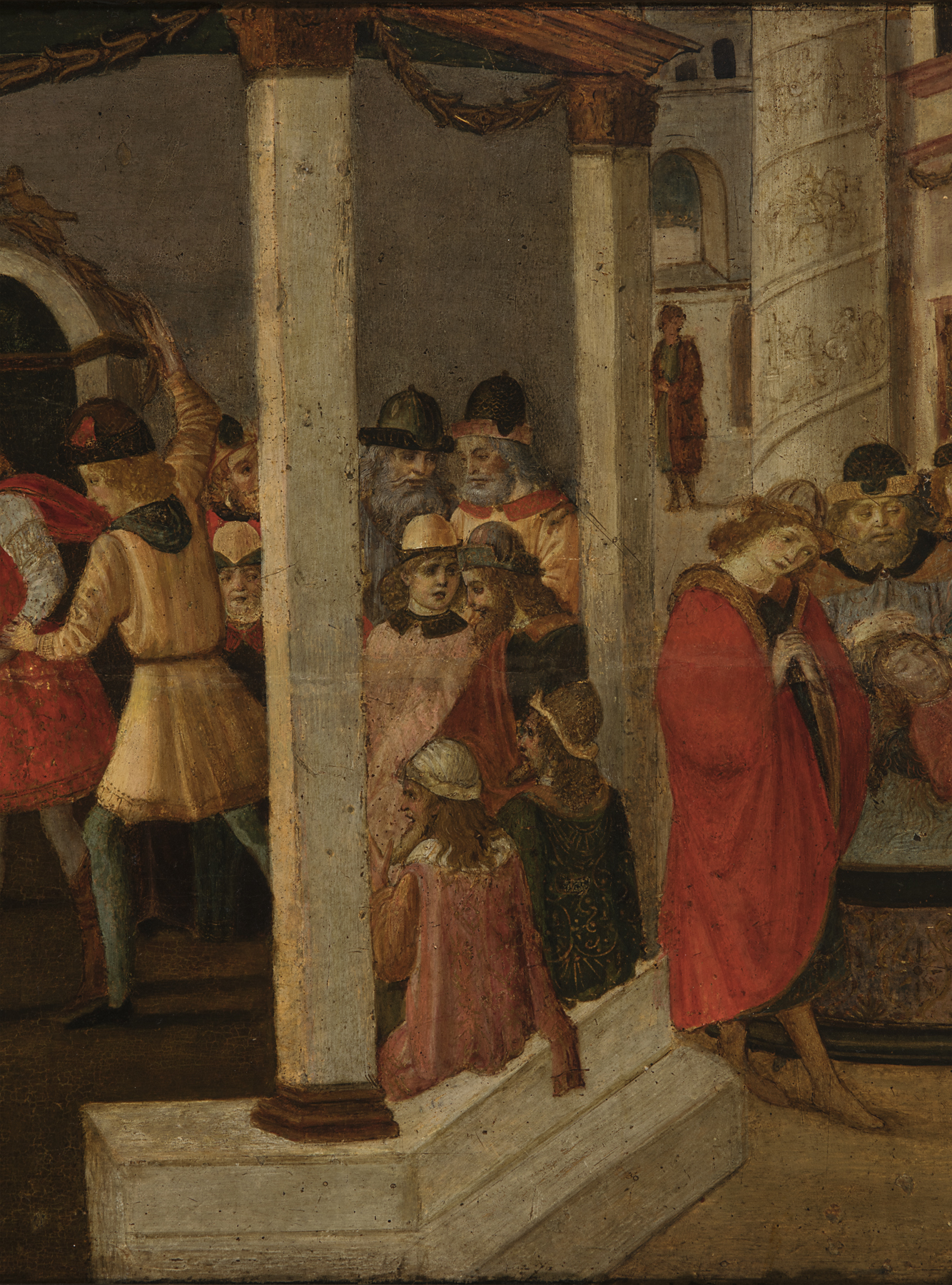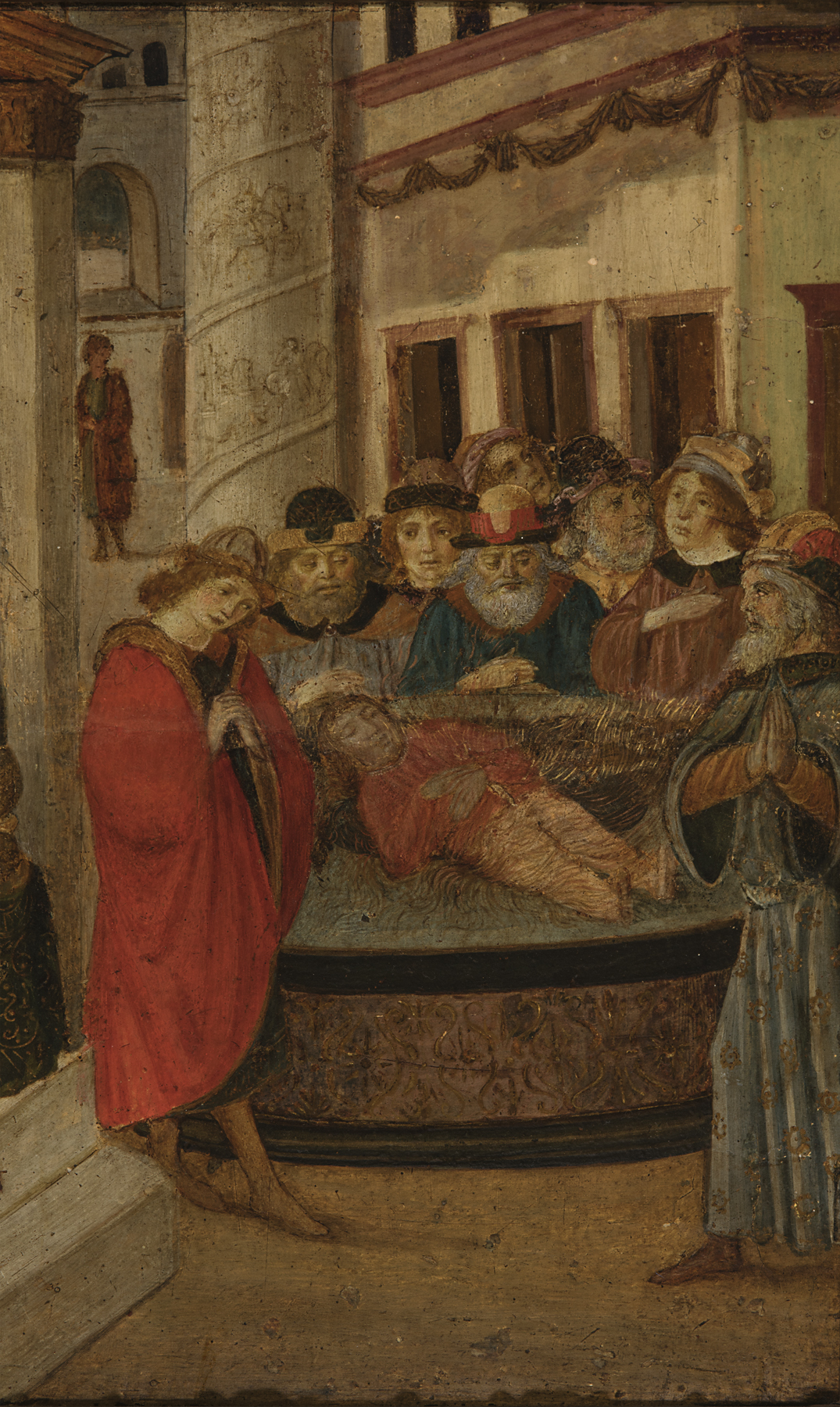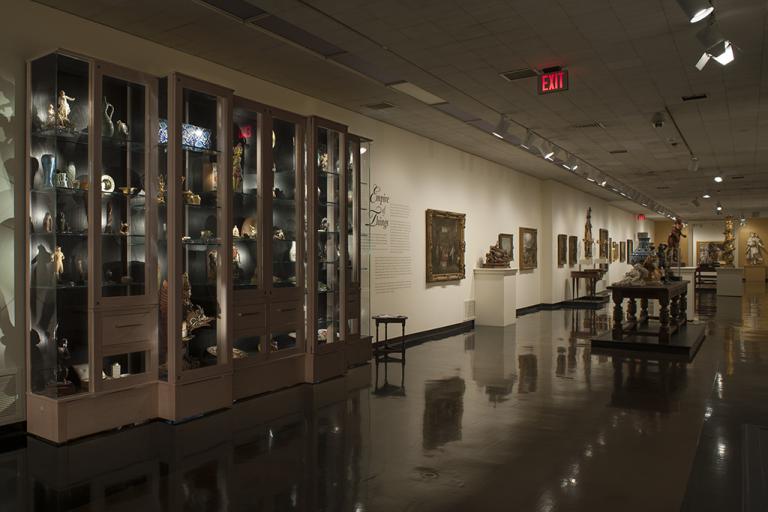The Assassination of Julius Caesar, Master of the Apollini Sacrum
Artwork Overview
Master of the Apollini Sacrum, artist
active 1480–1500
The Assassination of Julius Caesar,
late 1400s
Where object was made: Republic of Florence (present-day Italy)
Material/technique: tempera; wood
Dimensions:
Canvas/Support (Height x Width x Depth): 44.5 x 151.1 cm
Canvas/Support (Height x Width x Depth): 17 1/2 x 59 1/2 in
Frame Dimensions (Height x Width x Depth): 24 1/4 x 65 1/4 x 4 1/4 in
Canvas/Support (Height x Width x Depth): 44.5 x 151.1 cm
Canvas/Support (Height x Width x Depth): 17 1/2 x 59 1/2 in
Frame Dimensions (Height x Width x Depth): 24 1/4 x 65 1/4 x 4 1/4 in
Credit line: Gift from the Samuel H. Kress Study Collection
Accession number: 1960.0048
On display: Loo Gallery
If you wish to reproduce this image, please submit an image request

